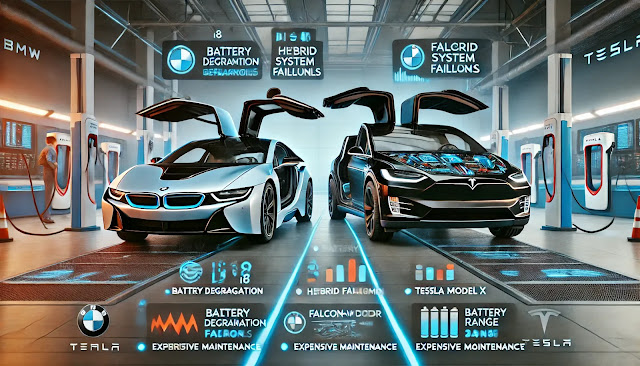What Does the Tesla Autopilot/FSD Interface Look Like? (Screenshots & Guide)
- Get link
- X
- Other Apps
Autopilot and Full Self-Driving (FSD)
Tesla's Autopilot and Full Self-Driving (FSD) capabilities represent a significant leap in driver-assistance technology. But what does it actually look like to use these features? This guide provides a detailed look at the Tesla Autopilot/FSD interface, including screenshots, explanations of the features, and important safety considerations.
T- Hardware 3 (HW3): Tesla's custom-built AI chip, featuring 12 CPUs and a neural network accelerator capable of trillions of operations per second, powers the Autopilot and FSD systems.
- Tesla Vision: This camera-based system, which replaced radar in newer Teslas, uses multiple external cameras to provide a comprehensive view of the vehicle's surroundings. Tesla Vision processes these images to understand the environment, detect objects, and navigate.
- Media Control Unit (MCU): The MCU is the car's central computer, responsible for everything from visualizations and navigation to entertainment and settings. It's the interface through which you interact with Autopilot and FSD.
Available Features:
Tesla's Autopilot and FSD offer a range of features designed to enhance driving convenience and safety. It's crucial to understand that these are driver-assistance systems, requiring constant driver attention and intervention. They are not self-driving systems.
- Traffic-Aware Cruise Control: This feature matches your car's speed to that of the surrounding traffic, automatically accelerating and braking to maintain a safe following distance. It works in various traffic conditions, including stop-and-go traffic, but requires driver oversight.
- Autosteer: Autosteer assists with steering within clearly marked lanes on highways and some city streets. It's important to note that Autosteer requires clear lane markings and may disengage in challenging conditions like heavy rain, construction zones, or poorly maintained roads.
- Navigate on Autopilot: This expands on Autosteer by automatically guiding your vehicle from highway on-ramp to off-ramp, including suggesting lane changes and navigating interchanges. Lane changes require driver confirmation.
- Auto Lane Change: When Autosteer is engaged, this feature assists in moving to an adjacent lane on the highway. The driver must initiate the lane change and confirm it via the turn signal.
- Autopark: Autopark can automatically parallel or perpendicular park your vehicle with a single touch. It identifies suitable parking spots and maneuvers the car into the space.
- Summon: Tesla offers two Summon features:
- Dumb Summon: Allows you to move your vehicle forward or backward in a straight line using the Tesla mobile app or key fob. This is useful for getting in and out of tight parking spaces.
- Smart Summon: (If equipped and enabled) This more advanced feature allows your vehicle to navigate more complex environments and parking lots to come find you. However, Smart Summon is still under development and has limitations. It's crucial to use it cautiously and be prepared to take control at any time.
How to Use the Interface:
- Access Controls: Tap the "Controls" icon on the touchscreen.
- Enable Autopilot: Toggle the switch next to "Autopilot" to enable the basic features.
- Enable FSD (If Applicable): If you have purchased the FSD capability, toggle the switch next to "Full Self-Driving."
- Activate Features: Use the steering wheel stalk or touchscreen buttons to activate specific features like Traffic-Aware Cruise Control, Autosteer, or Navigate on Autopilot. The touchscreen will provide visual feedback, showing the car's surroundings, detected lanes, and the status of each feature.
User Experience and Review:
Many users find the Tesla Autopilot and FSD interface intuitive and user-friendly. The real-time visualizations on the touchscreen provide valuable feedback, helping drivers understand what the system is "seeing" and how it's reacting. However, it's essential to remember that these systems are not perfect. Users have reported occasional instances of phantom braking, difficulty with lane changes in certain situations, and challenges in complex urban environments. Continuous driver attention remains paramount.
Comparison with Competitors:
While other automakers like Ford, GM, and Mercedes-Benz offer driver-assistance systems, Tesla's approach stands out due to its reliance on Tesla Vision (camera-based system), the powerful HW3 chip, and frequent over-the-air software updates. This allows Tesla to continuously improve the capabilities of Autopilot and FSD.
Safety Considerations:
- Driver Attention is Key: Even when using Autopilot or FSD, you are responsible for the vehicle. Maintain situational awareness and be prepared to take control at any time.
- Limitations of the System: Autopilot and FSD have limitations. They may struggle in challenging conditions like heavy rain, fog, poorly marked roads, construction zones, or complex urban environments.
- No Substitute for Safe Driving Practices: These features are intended to assist drivers, not replace them. Always follow safe driving practices, including maintaining a safe following distance, obeying traffic laws, and avoiding distractions.
%20engaged.%20The%20car%20is%20in%20its%20lane,%20surrounded%20by%20other%20vehicles.%20A%20small%20touchscr.webp) |
Tesla Driving on a Highway with Autopilot/FSD Engaged (Small Touchscreen Overlay) |
The Future of FSD:
Tesla continues to develop FSD capabilities, with the goal of achieving full autonomy. Future updates may include improved object detection, enhanced navigation in complex environments, and more sophisticated decision-making.
Explore More:
For the most up-to-date information on Tesla's Autopilot and FSD, please visit the official Tesla website.
- Get link
- X
- Other Apps
%20visualization%20while%20driving%20on%20a%20highway.%20The%20screen%20features%20lane%20markings,%20.webp)

%20settings.%20The%20screen%20features%20a%20speed%20limit%20indicator,%20following%20distance%20adju.webp)








Comments
Post a Comment